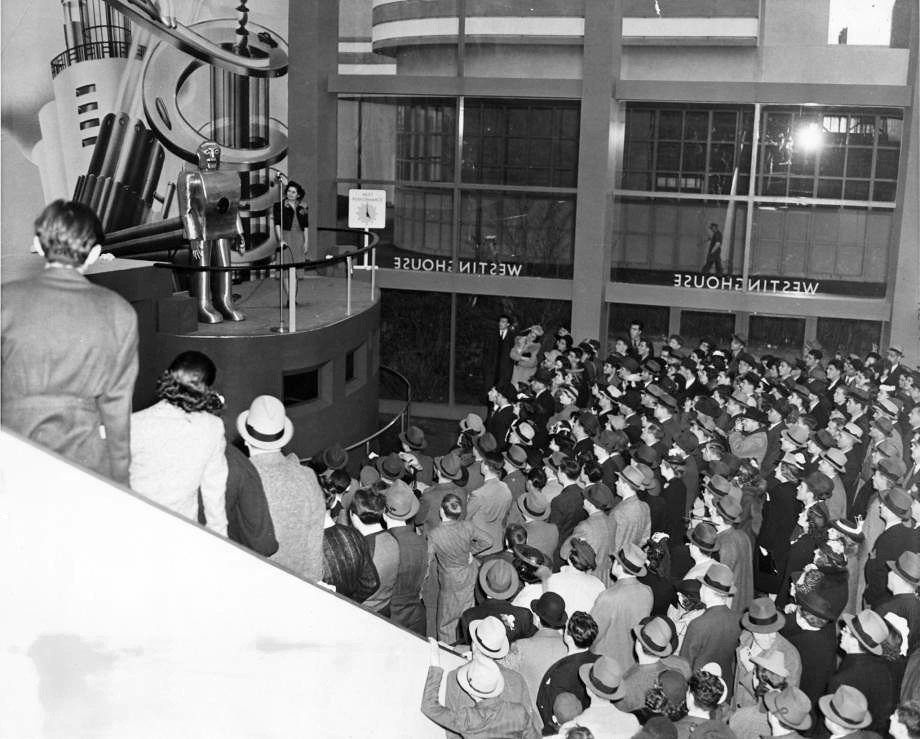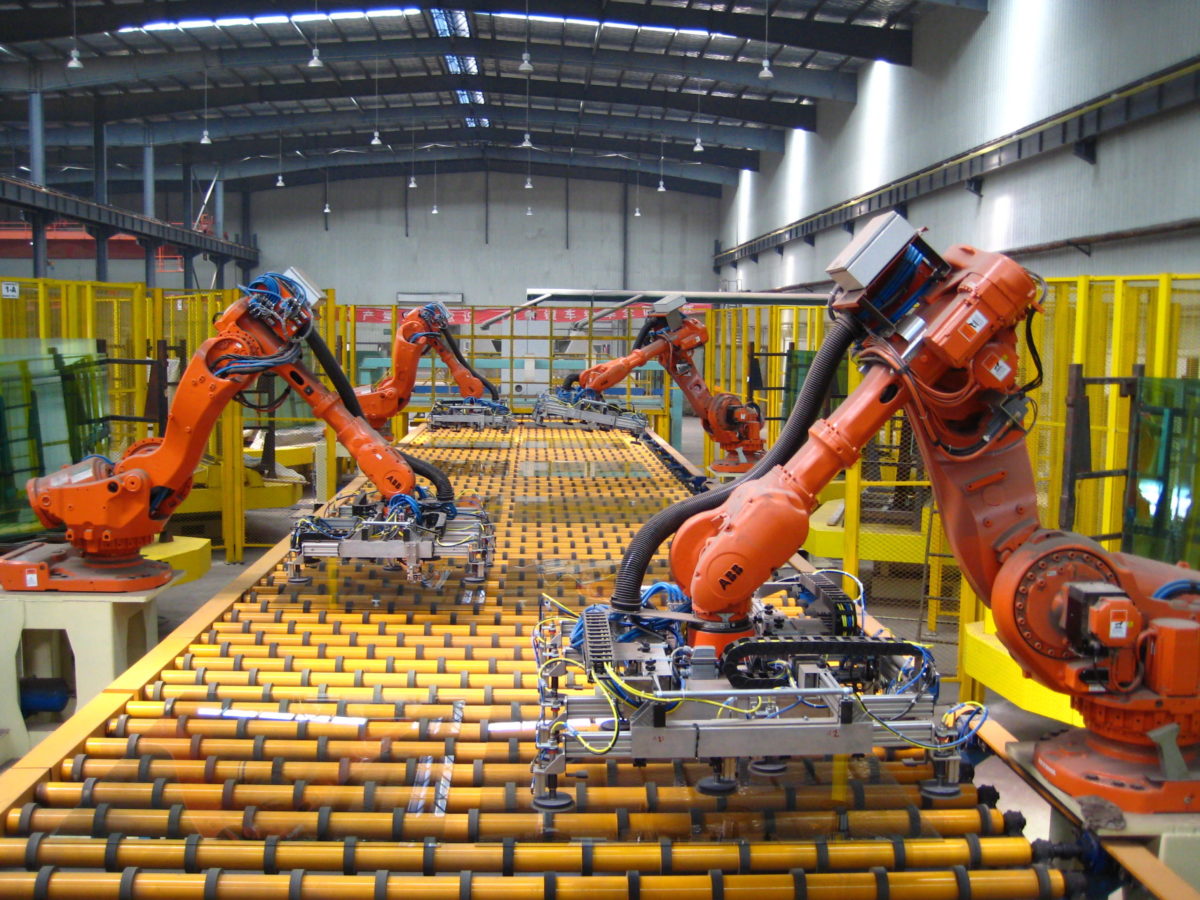The story of Hazelwood is the story of Pittsburgh.
Once home to bustling steel mills, the neighborhood fell into disuse in the 1980s. For decades, former steel mills along the river sat empty, a reminder of the city’s more prosperous past.
But in recent years, Pittsburgh’s economy has rebounded. And one former Hazelwood mill has come back to life – this time bolstered by the city’s growing strength as a robotics hub.
It got a new boost in May, when Carnegie Mellon University announced that the Richard King Mellon Foundation had approved a record $150 million grant to university science initiatives. Much of this will fund redevelopment at Hazelwood Green, a former steel mill now being converted into a hub for innovation.
As it made the announcement, a statement from the university said the funds will expand CMU research into “the digital transformation of manufacturing through the Manufacturing Futures Institute,” as well as help to build a new robotics innovation center.
For local robotics developers and technologists, the news is a fitting acknowledgement of the city’s role as an increasingly important robotics hub. The initiative also shows the convergence of two areas long familiar to Pittsburgh: robotics and manufacturing. With advanced technology for factories and production facilities becoming a strength of Pittsburgh’s innovation community, such developments point toward further intertwining of these areas. Yet, despite the ready imagery of the up-and-coming robots moving in to replace the 150-year-old mills, both local industries remain important, and on separate courses for now. A look at where they might be heading has implications for the regional economy’s future.
A homegrown connection
Jared Glover, CEO of Pittsburgh’s CapSen Robotics, first worked with robots as an undergrad at Carnegie Mellon. But there weren’t as many opportunities in the field in Pittsburgh when he graduated and left to pursue his doctorate at MIT.
“When I left Pittsburgh, I think there were maybe four or five robotics companies,” he says. Since then, though, “there’s been a tenfold increase.”
Glover returned to Pittsburgh to found CapSen, where he and his team work with 3D vision and motion planning to enhance robots’ ability to understand their surroundings. CapSen’s robotic arms can pick through items in bins – a useful tool on factory assembly lines and in warehouses.
A lot has changed since Glover graduated CMU in 2005. Glover now sees Pittsburgh as the perfect base for a robotics company like his.
“Pittsburgh is fantastic for a number of reasons,” he said. “We have close to a hundred companies here that are either robotics startups or robotics groups within a bigger company.”

CapSen CEO Jared Glover (via LinkedIn)
He also noted that the talent pipeline from his alma mater, which is the first university to offer a doctorate degree in robotics, as a major plus.
Glover is right to note the change; in the past decade alone, Pittsburgh has become home to robotics development institutes such as the Advanced Robotics for Manufacturing (ARM) Institute and the consortium Pittsburgh Robotics Network. Plus, enough robotics companies have headquarters along the Allegheny River in Lawrenceville that the strip is now known as Robotics Row. This is all in addition to the CMU-based National Robotics Engineering Center, which has researched and developed robotics technologies for more than 25 years.
Glover and CapSen have benefited from the support of ARM for a recent project putting 3D cameras on the end of robot arms. This will allow the robots to map out their own environments.
“Over the last five years, robots have become more and more useful, more and more competitive, and more and more capable of doing a lot of fine tasks, working in industries where they never worked before,” Jay Douglass, ARM’s COO, said.
ARM connects universities, startups and corporations to work on robotics projects it deems crucial, in everything from textiles production to 5G. Douglass notes that robotics and AI are the foundation of what is called “Manufacturing 4.0” – first was steam, second was electricity, and third was computing. Robotics and AI, then, will usher in a new era of production.
Only a portion of the city’s robotics companies are applying their products to manufacturing, as others are working in the areas of construction, consumer products, health services and more. But Glover sees robotics’ growing role in manufacturing as the carrying-on of a great Pittsburgh tradition.
“Pittsburgh used to be the manufacturing capital of the world. We literally built the modern industrial age here,” he said. And despite the city’s late 20th-century economic decline, “manufacturing has stayed an important part of our economy.”
Though Pittsburgh is no longer the steel capital of the world, manufacturing remains its fourth-largest industry. But its robotics development prompts a question technologists – and the general public – have been asking for years: Are robots going to steal our jobs? And if so, when?

Downtown Pittsburgh, viewed from the Hazelwood Green development, 2017. (Photo courtesy of Carnegie Mellon University)
The jobs question
In 2014, when a Pew Research Center poll asked experts “whether AI and robotics would create more jobs than they would destroy,” 48% said more jobs would be lost than created, while the remaining 52% said the reverse. But a more recent study by MIT economist Daron Acemoglu found “fairly major negative employment effects,” and, according to a MIT writeup, “each additional robot added in manufacturing replaced about 3.3 workers nationally, on average.”
A 2016 study by the same economist found that the technology ups productivity, thus creating more demand for workers who can do jobs the robots can’t. However, this also leads to what Acemoglu calls a “displacement effect,” in which robots take the jobs of the lowest-skilled workers, who are unable to outperform the machines.
But what does all this mean for Pittsburgh’s manufacturing sector? Chris Briem, a regional economist at the University of Pittsburgh’s Center for Social and Urban Research (UCSUR), points out that Pittsburgh’s relationship with robotics isn’t as new as some might think.
“There’s a robot history in Pittsburgh that goes back 50 to 100 years,” he says, noting that Westinghouse was building proto-robots decades ago.

A crowd watches Westinghouse’s Elektro the Moto-Man at the 1939 NY World’s Fair. Photo by Flicker user Tom Simpson
Meanwhile, the region’s manufacturing employment is at an all-time low – in fact, factories’ issues lately haven’t been that there aren’t enough jobs, but rather that there aren’t enough workers. Most regional manufacturers are actually actively looking for employees.
“Robots are not taking any of these [manufacturing] jobs away that I’m aware of in the industries that we have here,” Briem said. Plus, he adds, “the industries that we have here will need to be competitive and they’ll have to adopt technology to be competitive.”
It’s Petra Mitchell’s job to help manufacturers in the Pittsburgh region adopt competitive technology. Mitchell is CEO of Catalyst Connection, a private nonprofit organization that provides the region’s small- and medium-sized manufacturers with tech assistance and business development. She said she has seen growth in the Pittsburgh region’s manufacturing sector overall. With the exception of a temporary, COVID-related dip, “we continue to see manufacturing job growth,” she said.
Out of the manufacturers Catalyst Connection works with, “at least 50% have adopted some type of robotics technology,” she notes, and three-quarters of them are looking to adopt more of it in the future.
For now, however, she says, “We have no evidence that technology adoption has replaced jobs.” Catalyst Connection runs education initiatives to encourage Pennsylvanians to consider manufacturing careers. That’s because, she says, “pretty much every company is looking for workers.”
The tech lag
Part of this dynamic has to do with the technology being implemented. Mitchell said the manufacturers she’s worked with have largely implemented robots performing basic movement functions, such as loading and unloading equipment. And ARM’s Douglass noted that many of today’s robots are doing jobs that are “dirty, dull and dangerous” – the tasks that aren’t as desirable for humans.
In short: most of the robots we see in Southwestern Pennsylvania’s factories today are a far cry from the advanced technology being developed on Robotics Row, the area of Lawrenceville that’s home to several robotics startups.
“The issue always comes down to return on investment,” Douglass says. “Can you justify a $40,000 robot arm, plus the training for your people to operate it, install it and use it? And what’s the return?”
Even for companies with the resources to adopt advanced technologies, those technologies still have a long way to go.
Most of the robots we see in Southwestern Pennsylvania’s factories today are a far cry from the advanced technology being developed on Robotics Row.
“We can do things that you probably can’t imagine, but we’re way behind what you probably think is the norm,” said Douglass.
It’s one thing to make discoveries in a lab. Bringing it to the factory floor is another matter entirely. CapSen’s Glover said manufacturing is “still very, very manual. We’re still figuring out how to have these technologies get mass adoption.”
Perhaps one day, Pittsburgh-grown robotics technology will be standard in factories nationwide. Then, we’ll see the full impact of tech on the labor market. When it arrives, many technologists predict those manufacturing jobs could become more about operating robot arms than manually picking through products. In the meantime, the robotics companies themselves are contributing to growing the talent base, as they seek to draw robotocists from across the country.
At this point, manufacturing’s robotic future lives in labs at universities and companies. And much of it, soon, will be in a shimmering new space in Hazelwood.

This editorial series is underwritten by Pittsburgh Innovation District. This article was not reviewed before publication. Learn more here and sign up for our weekly newsletter on jobs in the region here.
Before you go...
Please consider supporting Technical.ly to keep our independent journalism strong. Unlike most business-focused media outlets, we don’t have a paywall. Instead, we count on your personal and organizational support.
Join our growing Slack community
Join 5,000 tech professionals and entrepreneurs in our community Slack today!

Federal grant freeze fire drill leaves orgs scrambling to brace for Trump-era priorities

20 entrepreneurship, tech and startup events to fill your February

These simple but crucial policy updates could be game-changers for entrepreneurs with disabilities


